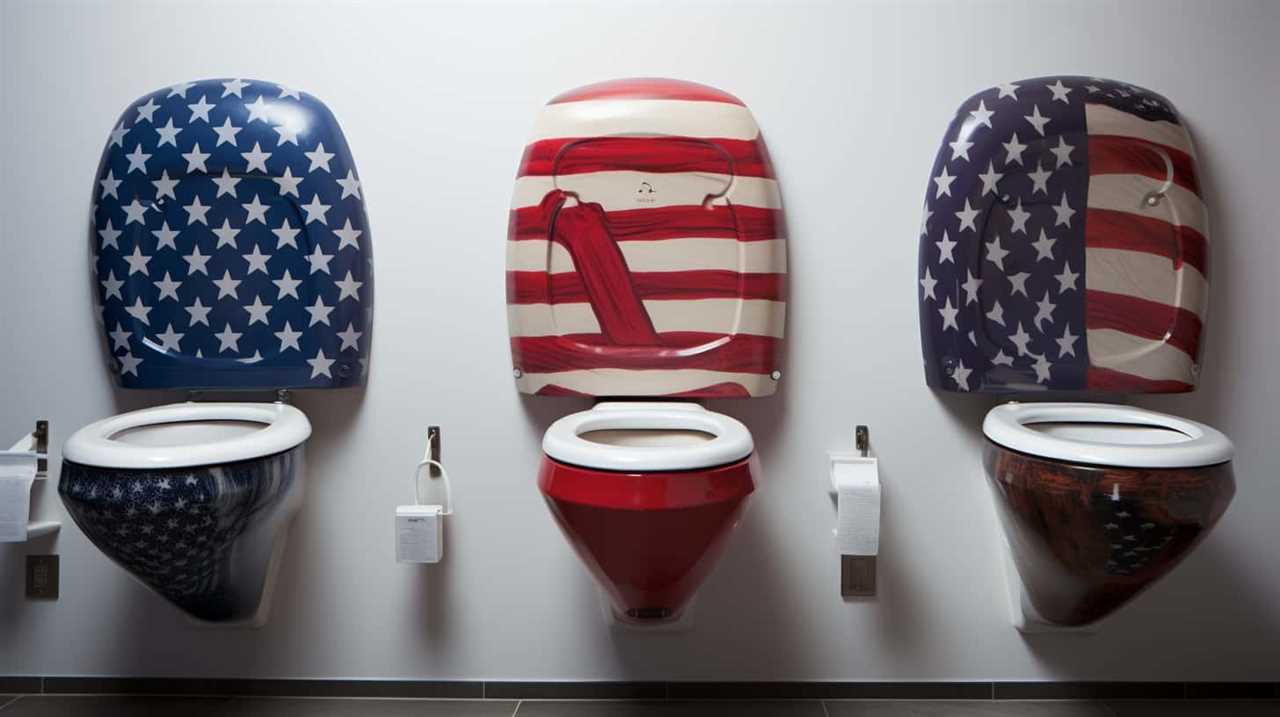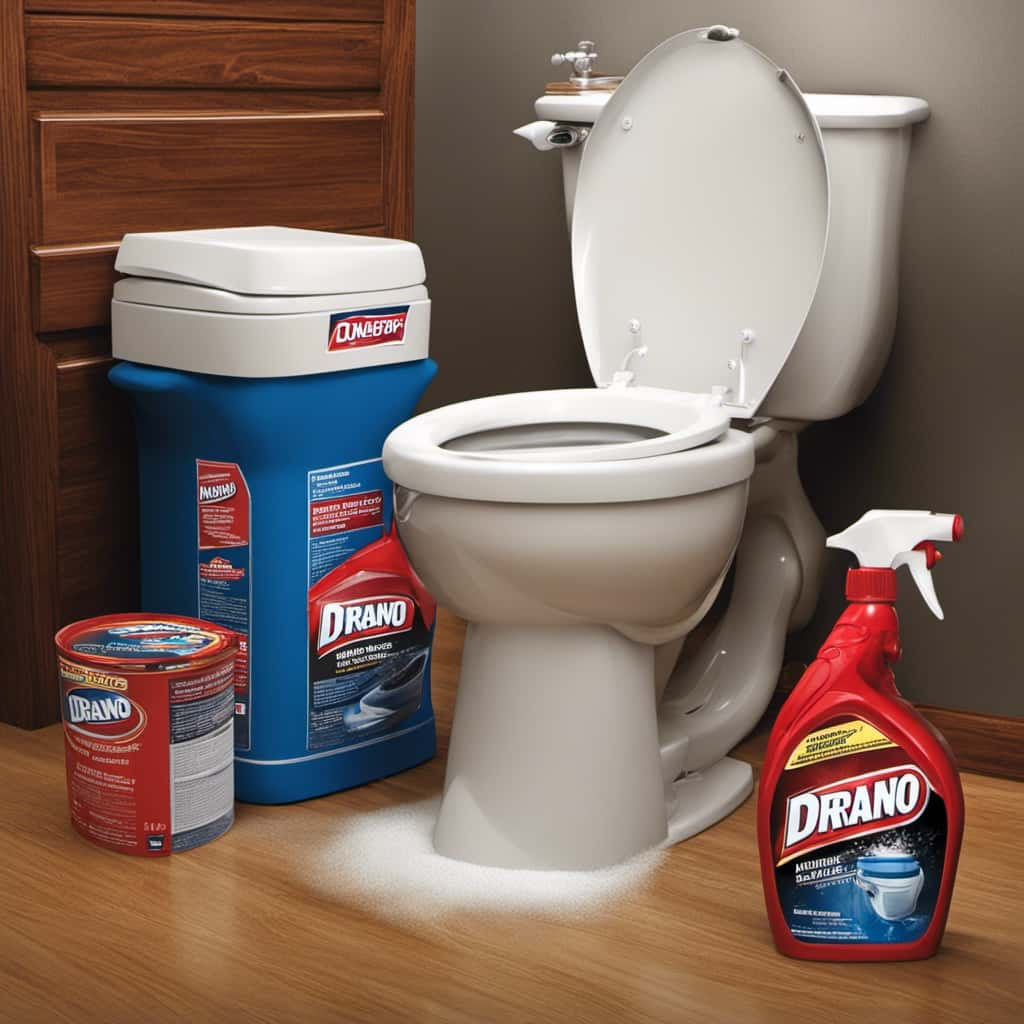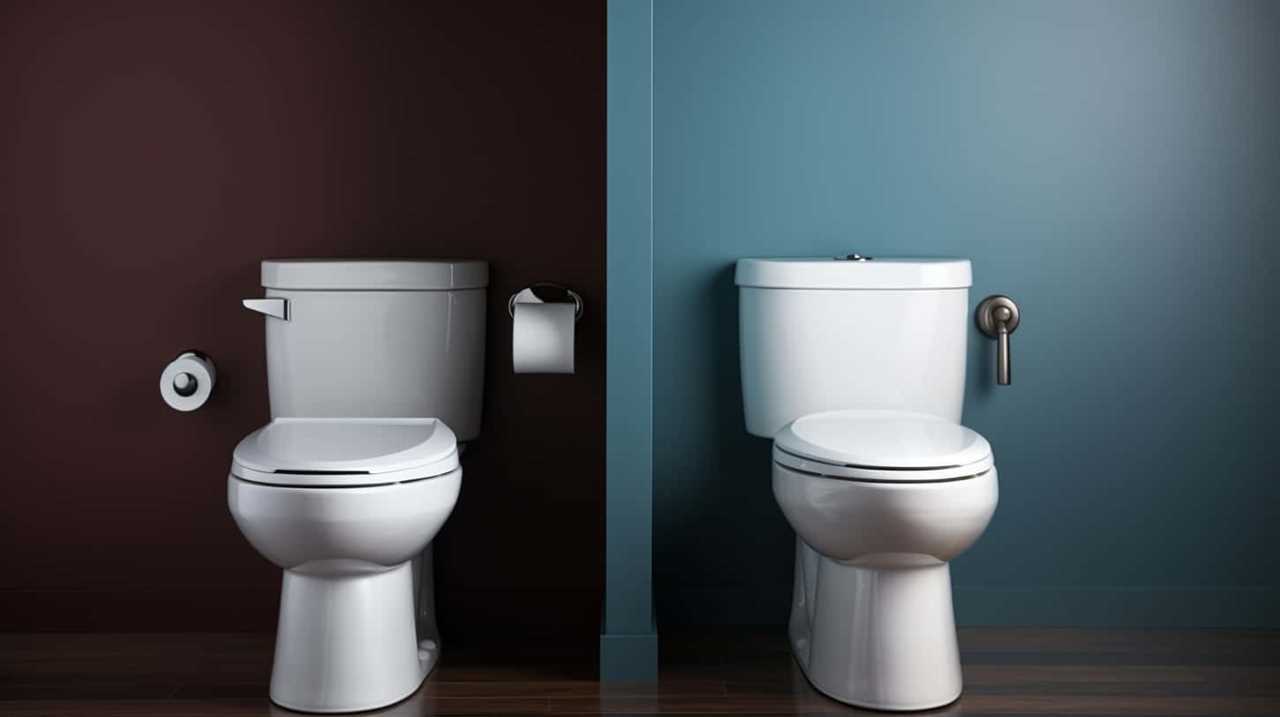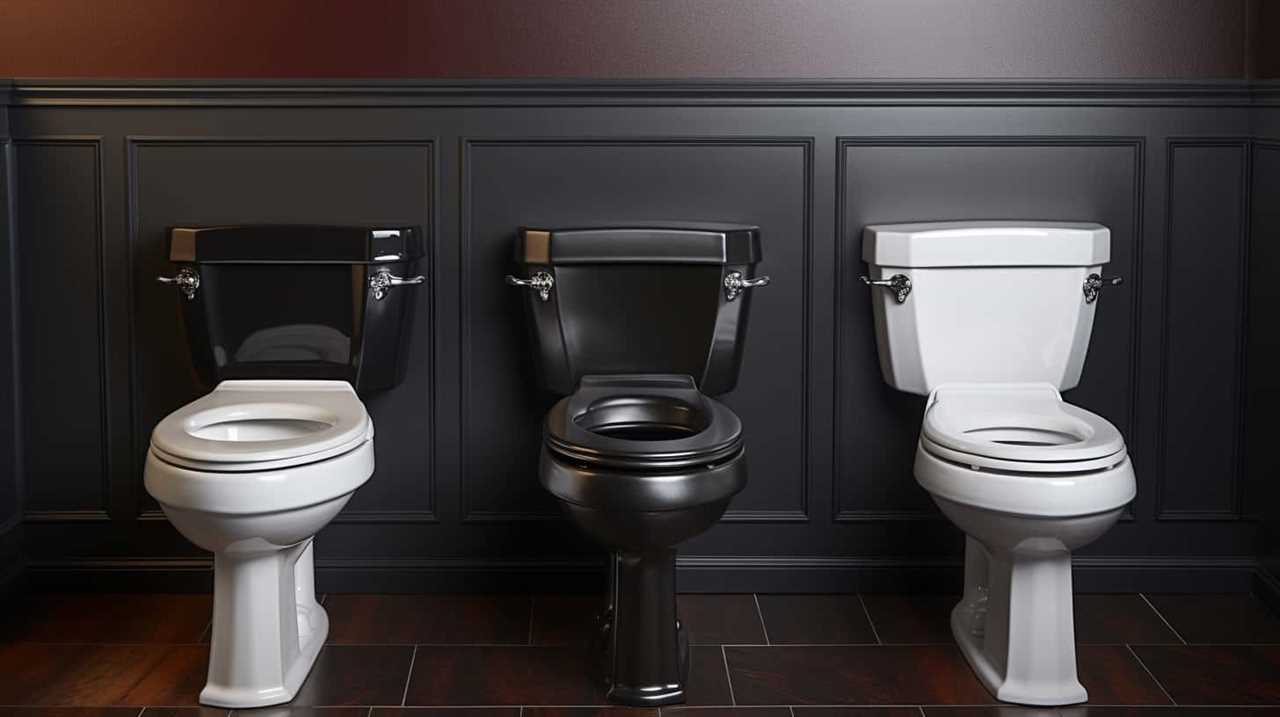We’ve all been there – you flush the toilet, and instead of quickly draining away, the water slowly rises before finally going down. It’s a frustrating and common problem that can have a few different causes.
In this article, we’ll explore some of the most likely culprits behind why your toilet fills up when you flush and then drains slowly. Understanding these issues will help you take the necessary steps to fix the problem and ensure your toilet functions properly.
Key Takeaways
- Clogged drain or pipe can cause water to back up in the toilet bowl, leading to an overflow.
- A malfunctioning flapper valve can cause a toilet to fill up when flushed and drain slowly.
- Incorrect water level adjustment can cause a toilet to fill up too much when flushed.
- A problem with ventilation can cause a toilet to fill up when flushed and drain slowly.
Clogged Drain or Pipe
Our first step in troubleshooting the issue of a toilet filling up when flushed and then draining slowly is to inspect the drain or pipe for any clogs. A clogged drain or pipe can cause water to back up in the toilet bowl, leading to an overflow. Additionally, it can also result in a toilet tank leak, causing water to slowly drain out.
To check for clogs, start by using a plunger to create pressure and dislodge any blockages. If that doesn’t work, a toilet auger can be used to break up and remove stubborn clogs. It’s important to be cautious when using these tools to avoid causing damage. Remember to wear gloves and protective eyewear while performing this task.
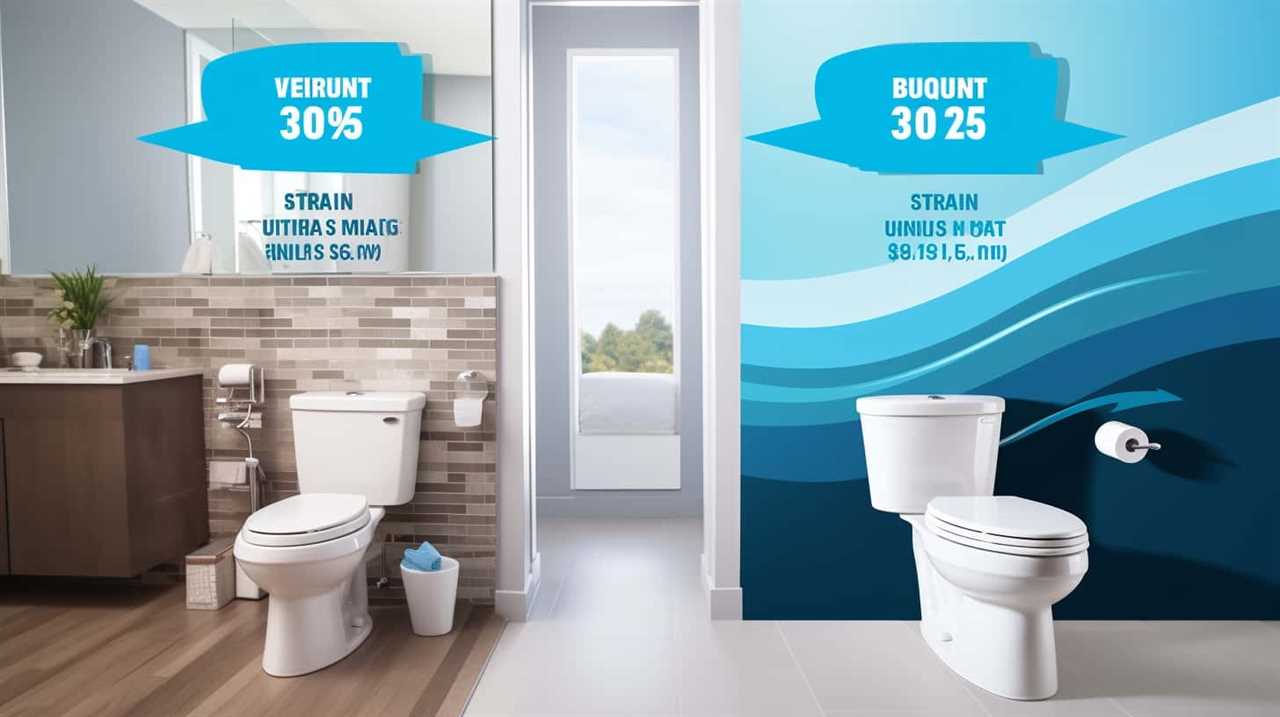
Malfunctioning Flapper Valve
A potential cause for a toilet filling up when flushed and draining slowly is a malfunctioning flapper valve. The flapper valve is a crucial component in the toilet tank that controls the release of water into the bowl. When it malfunctions, it can lead to various issues, including slow draining and water overflow.
Here are four important points to consider about a malfunctioning flapper valve:
- Flapper valve replacement: If the flapper valve is damaged or worn out, it may need to be replaced. This can be done by turning off the water supply, removing the old flapper valve, and installing a new one.
- Flapper valve maintenance: Regular maintenance is essential to prevent flapper valve malfunction. This includes checking for cracks or leaks, cleaning any debris, and ensuring proper alignment.
- Water level adjustment: A malfunctioning flapper valve can cause the water level in the tank to rise too high, leading to overflow. Adjusting the water level can help prevent this issue.
- Professional assistance: If you’re unsure about how to replace or maintain the flapper valve, it’s recommended to seek the help of a professional plumber who can ensure proper installation and prevent further damage.
Water Level Adjustment Issue
To address the issue of a toilet filling up when flushed and draining slowly, we need to examine the water level adjustment problem. One possible cause for this problem is a float valve malfunction. The float valve is responsible for regulating the water level in the toilet tank. If it isn’t functioning properly, it can lead to an incorrect water level, causing the toilet to fill up too much when flushed.
Another factor to consider is a water pressure problem. If the water pressure is too low, it can affect the toilet’s ability to flush properly and result in a slow drain.
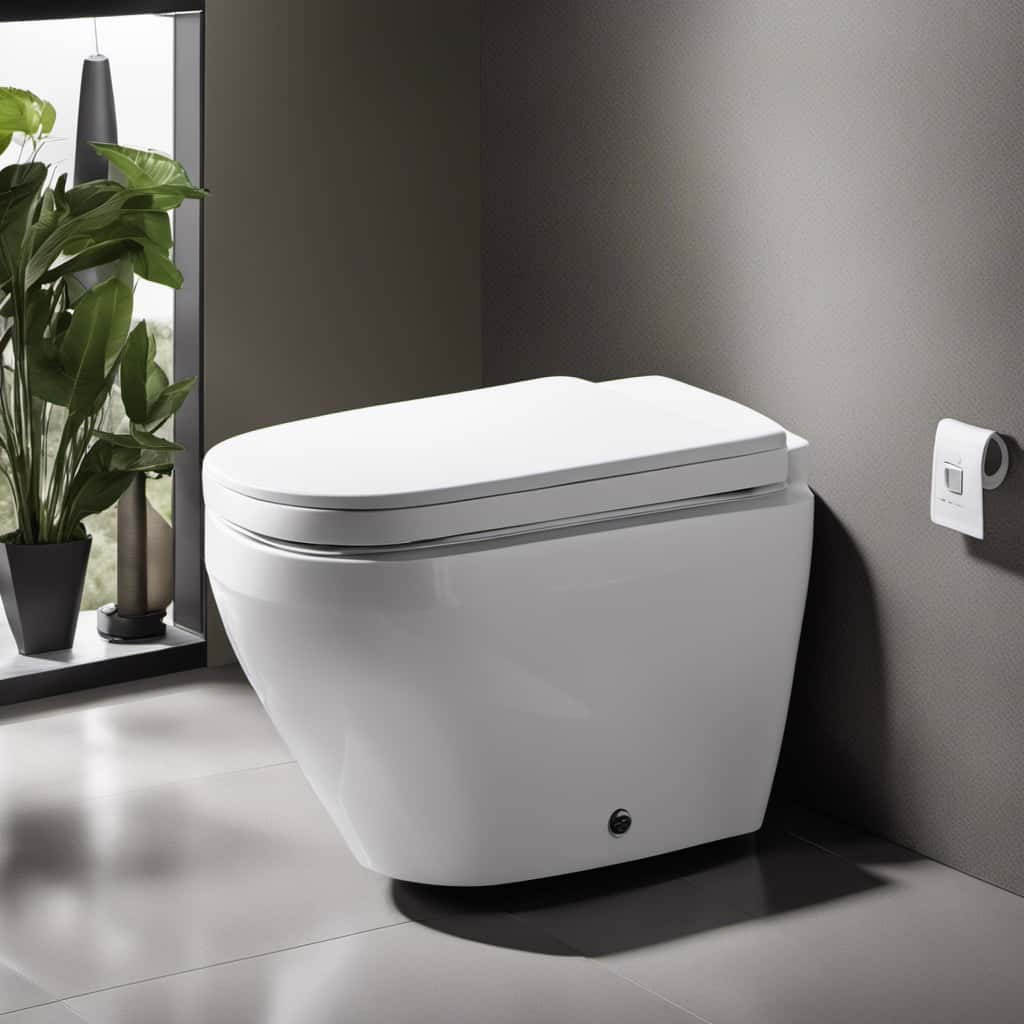
To fix this issue, it’s necessary to adjust the water level in the tank by either adjusting the float valve or ensuring proper water pressure.
Ventilation Problem
One possible explanation for the issue of a toilet filling up when flushed and draining slowly is due to a problem with the ventilation. Proper air circulation is essential in a plumbing system to maintain the proper functioning of drains and toilets. A ventilation problem can hinder the flow of air, causing negative pressure within the plumbing system. This negative pressure can prevent the water from flowing freely and lead to a slow drain.
Additionally, a lack of proper ventilation can also lead to odor control issues, as the trapped air can cause unpleasant smells to linger in the bathroom. To address a ventilation problem, it’s recommended to check the vent pipes for any blockages or obstructions that may be impeding the airflow. This will help ensure the smooth operation of the plumbing system and prevent further issues such as sewer line blockage.
Sewer Line Blockage
We may encounter a sewer line blockage as the cause of the toilet filling up when flushed and draining slowly. A blocked sewer line can be a major inconvenience and can lead to costly repairs if not addressed promptly. To help you understand this issue better, here are some key points about sewer line blockages:

| Sewer Line Maintenance | Signs of a Blocked Sewer Line |
|---|---|
| Regular cleaning and inspection of sewer lines can prevent blockages. | Slow drainage or water backing up in multiple drains. |
| Avoid flushing non-biodegradable items down the toilet. | Foul odors coming from drains or toilets. |
| Tree roots can infiltrate sewer lines, causing blockages. | Gurgling sounds in drains or toilets. |
| Grease buildup can lead to blockages. | Sewage backups in the basement or yard. |
| Professional plumbers can use specialized tools to clear blockages. | Sewage coming up through floor drains or toilets. |
Regular sewer line maintenance and being aware of the signs of a blocked sewer line can help you identify and address issues early on, preventing further damage and costly repairs.
Frequently Asked Questions
Can a Clogged Drain or Pipe Cause My Toilet to Fill up When I Flush?
Yes, a clogged drain or pipe can cause our toilet to fill up when we flush. The blockage prevents proper drainage, causing water to back up and fill the bowl.
How Can I Tell if the Flapper Valve in My Toilet Is Malfunctioning?
When dealing with a malfunctioning flapper valve, it’s crucial to understand the signs and how to fix it. By mastering this, we can ensure a smooth and efficient toilet operation.
What Should I Do if My Toilet’s Water Level Is Not Adjusting Properly?
When our toilet’s water level doesn’t adjust properly, we have toilet flushing issues. To fix it, we check the flapper valve, adjust the float, or clear any clogs in the drain.
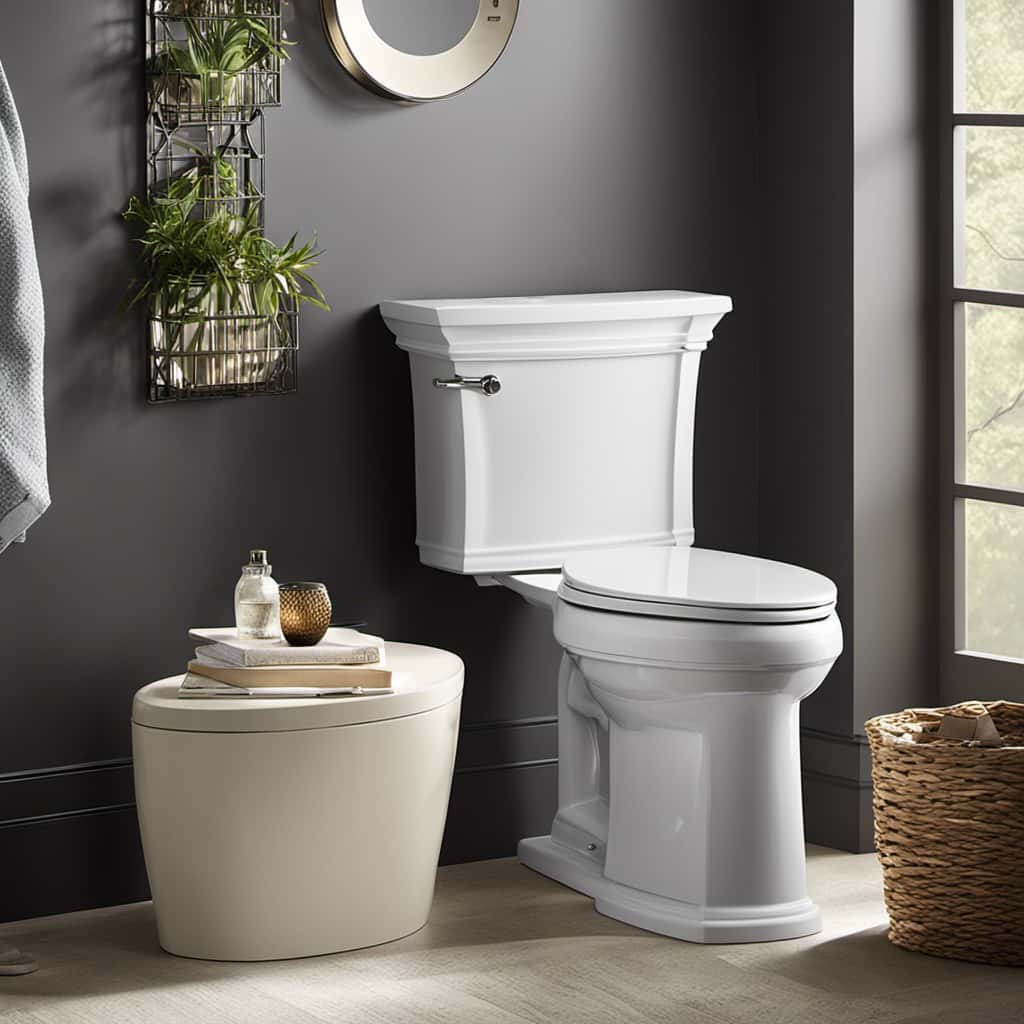
Could a Ventilation Problem Be Causing My Toilet to Drain Slowly?
Toilet ventilation is a crucial factor in maintaining proper drainage. If the ventilation system is not functioning effectively, it can result in slow draining. A thorough plumbing inspection can help identify and resolve any ventilation issues.
How Can I Determine if There Is a Blockage in My Sewer Line Causing the Toilet to Fill up and Drain Slowly?
To determine if there’s a blockage in our sewer line causing the toilet to fill up and drain slowly, we can perform a sewer line inspection and use toilet clog detection methods.
Conclusion
In conclusion, a toilet fills up when flushed and drains slowly due to various potential issues. These include:
- A clogged drain or pipe
- A malfunctioning flapper valve
- An adjustment issue with the water level
- A ventilation problem
- A sewer line blockage
It’s important to identify and address the specific cause of the problem to ensure proper functioning of the toilet.
